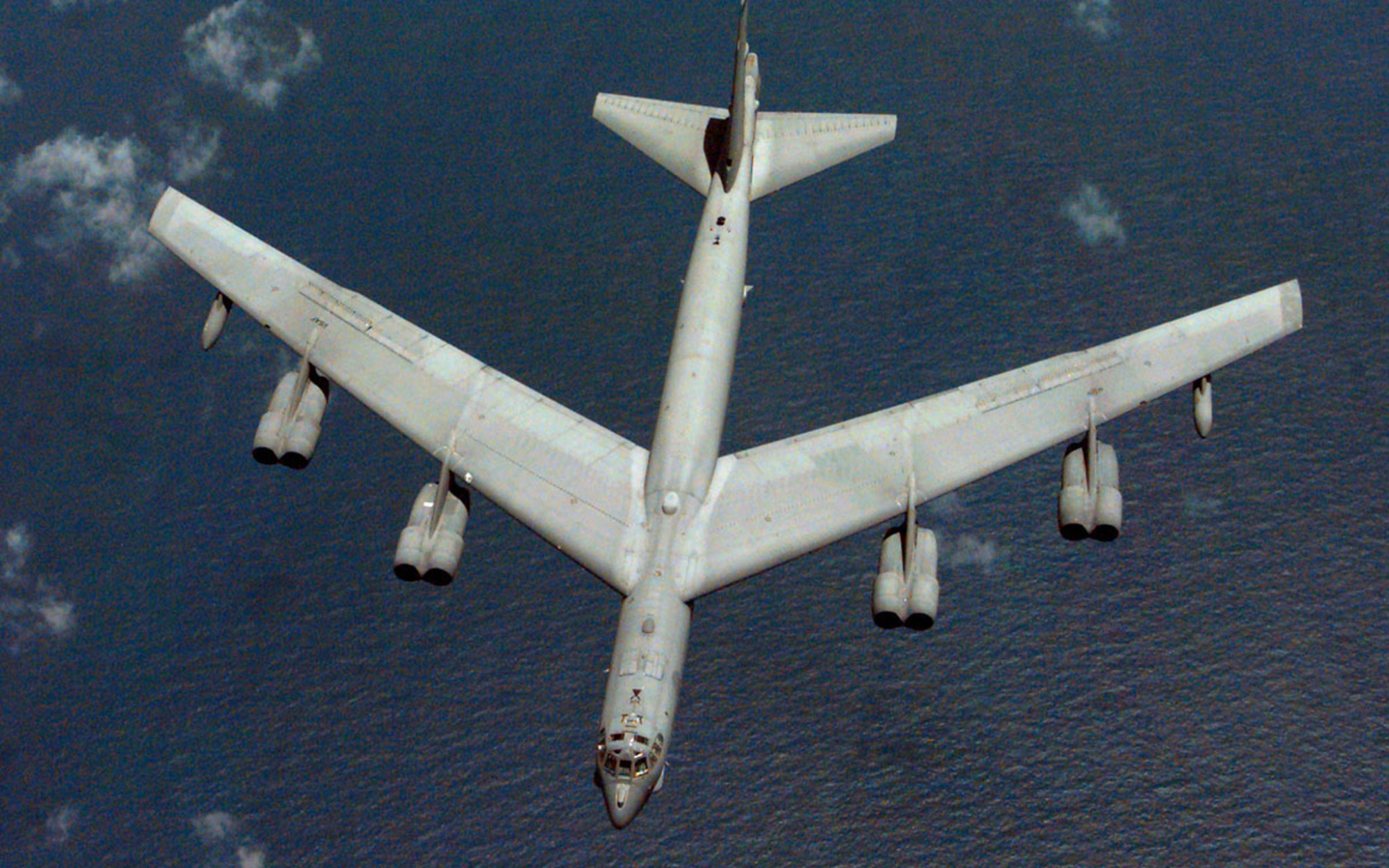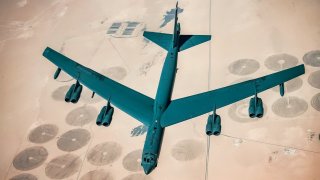B-52J: The U.S. Air Force's 100-Year Bomber Thanks to 1 Reason
The U.S. Air Force's upgraded B-52J bomber program faces delays but promises significant enhancements with new Rolls Royce engines, improved avionics, and advanced radar systems. These upgrades aim to keep the B-52 relevant amid rising tensions with China. However, a Congressional report reveals the B-52J may be three years behind schedule due to budgetary issues.
Summary and Key Points: The U.S. Air Force's upgraded B-52J bomber program faces delays but promises significant enhancements with new Rolls Royce engines, improved avionics, and advanced radar systems. These upgrades aim to keep the B-52 relevant amid rising tensions with China. However, a Congressional report reveals the B-52J may be three years behind schedule due to budgetary issues.

-Despite these setbacks, the Air Force plans to field at least seventy-six B-52Js alongside 100 next-generation B-21 Raiders, ensuring the Stratofortress remains a key component of U.S. aerial dominance well into the 2050s.
B-52J Bomber Faces Delays but Offers Significant Enhancements
As tensions between Washington and Beijing continue to mount, the U.S. military is gearing up for a potential kinetic conflict in the Pacific.
Achieving aerial dominance would unquestionably be the Air Force’s prerogative considering such a conflict. As part of the service’s wartime strategy, it plans to deploy an upgraded variant of its B-52 stealth bomber. Although this Cold War-era airframe is rapidly aging, enhancements ranging from new Rolls Royce engines, improved avionics and advanced radar systems will make the B-52 relevant for years to come. The B-52J is not the only upcoming program to be slammed with timing issues.
In recent months, reports detailing the delays of upcoming guided missile destroyers, aircraft carriers and submarines have circulated.
What is causing the B-52J’s setbacks?
According to a new report from a Congressional watchdog, however, the new and improved B-52J bomber may not be serviceable in time to make a difference in an imminent war with China. The bomber is reportedly three years behind schedule due to budgetary issues and other delays.
The Government Accountability Office’s report released last week details that “The program noted that there have been program delays in part due to funding shortfalls to complete the detailed design, but that it has worked with the contractors and submitted budget requests to support critical design review in August 2025 and initial operational capability in mid-fiscal year 2033.”
Essentially, the proposed cost of the B-52J was greater than the program’s available funding.
Specs & capabilities- what we know:
Perhaps the crux of the B-52J bomber program is the incorporation of the Rolls Royce F130 engine, which will replace the platform’s existing Pratt & Whitney TF33 model. This new engine system will provide the bomber with a longer range while providing decreased maintenance requirements.
In addition to the engine refit, the B-52J variant will feature enhanced avionics, digital displays and an increased payload capability.
According to a War Zone report, upgraded radar will be fitted to improve situational awareness, resistance to countermeasures and provide new electronic warfare functions. L3Harris Technologies was awarded a staggering $34 million contract last month to modernize the B-52J’s cockpit, which will help consolidate these new functions. Armament-wise, the AGM-181 Long-Range Stand-Off missile is expected to achieve initial operational capability in 2030.

The B-52J and the upcoming B-21 Raider are expected to carry this new long-range nuclear cruise missile.
The Air Force won’t be retiring its Stratofortress fleet anytime soon:
Despite the B-52’s old age, the upcoming new and improved Stratofortress variant is expected to play a dominant role in the Air Force’s fleet once introduced. In fact, the Air Force plans to field a consortium of at least seventy-six upgraded B-52s in addition to 100 next-generation B-21 “Raider” bombers.
Once the B-52Js enter service, they will likely last well into the early 2050’s. That means the B-52 bomber could very will indeed fly for 100 years.
About the Author: Maya Carin, Defense Expert
Maya Carlin, National Security Writer with The National Interest, is an analyst with the Center for Security Policy and a former Anna Sobol Levy Fellow at IDC Herzliya in Israel. She has by-lines in many publications, including The National Interest, Jerusalem Post, and Times of Israel. You can follow her on Twitter: @MayaCarlin.


